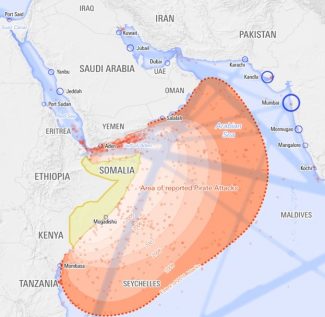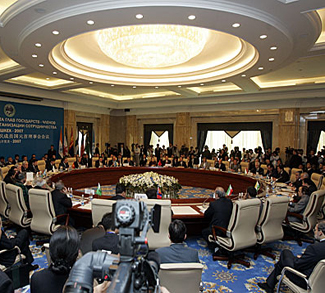The Middle Eastern countries, with their ‘Look East’ policy and the growing instability in the region, have been interested in strengthening ties with Asian countries. ASEAN is not an exception. In recent years, ASEAN-Middle East relations have experienced a noticeable growth not only in the economic realm, but also in political and military spheres.
ASEAN’s geographical position and its growing economy have attracted the Middle Eastern countries to expand their partnership. Besides an alluring target for investments, ASEAN, as one of the world’s highly populated regions, is an enticing consumer market for Middle Eastern exports. At the same time, its strategic location offers the countries of the Middle East an opportunity to strengthen their presence in the wider Asia-Pacific region.
With no sign of an end to the instability in the Middle East and the fierce competition between US, China, and European powers, the Middle East is likely to continue to strengthen its cooperation with alternative partners and ASEAN seems to be on the list. In this context, there is one opportunity for the Middle Eastern countries to strengthen its footholds in ASEAN: The sub-regional initiative.
As an attempt to speed up the process of economic integration and to solve various developmental issues in a geographically multilayered region, ASEAN has established subregional initiatives based on geographic proximity which are hoped to tackle developmental gaps, while at the same time increase connectivity and international coordination.
The first ASEAN’s subregion was the Indonesia-Malaysia-Singapore Growth Triangle (IMS-GT), which was established in 1989 to boost economic linkages between these countries. It was followed by the Greater Mekong Subregion (GMS) in 1992 which was specifically founded to develop the Mekong River. One year later, in an effort to expand the labor-intensive industries in northern Malaysia to the surrounding less developed regions, the Indonesia-Malaysia-Thailand Growth Triangle (IMT-GT) was launched. In 1994, the Brunei Darussalam–Indonesia–Malaysia–Philippines East ASEAN Growth Area (BIMP-EAGA) was launched with the aim of co-developing the less developed regions within the four maritime nations of ASEAN.
Many countries around the world have tried to strengthen partnerships with these subregions. South Korea, for example, has developed strong ties with GMS since 2010 and their partnership has been upgraded to a “strategic partnership” in 2020. At the same time, China, as one of the earliest non-ASEAN countries to engage with BIMP-EAGA, has stepped up in recent years with various initiatives such as the Framework of Cooperation document, which affirms its role as a ‘strategic development partner’ and with the Plan of Action for BIMP-EAGA China Cooperation 2020–2025.
The Middle East should also seek to establish partnership with these subregions in strengthening its footholds in ASEAN. BIMP-EAGA, in particular, can be the starting point.
BIMP-EAGA covers Brunei and parts of Malaysia (Sabah, Labuan, and Sarawak), Indonesia (Kalimantan, Maluku, Papua, and Sulawesi), and the Philippines (Mindanao and Palawan). Although these areas are geographically distant from national capitals, they are strategically close to each other. The initiative is aimed to elevate socio-economic development in these remote areas through regional cooperation.
Although the initiative showed small progress in the early years due to the 1997-1998 Asian Financial Crisis, since the beginning of 2000s BIMP-EAGA has gained stronger ground. In 2003, its intergovernmental coordinating body, the Facilitation Center, was established. Additionally, BIMP-EAGA Leaders’ Summits have been regularly held ever since. It has also effectuated three major documents which have guided its development: Roadmap to Development (2006-2010), Implementation Blueprint (2012-2016) and BIMP-EAGA Vision 2025 (2017-2025). These documents laid out BIMP-EAGA’s ‘strategic pillars,’ its major economic sectors and crucial projects that would help realize the BIMP-EAGA vision for a “resilient, inclusive, sustainable, and economically competitive subregion.” Follow-up development projects have been actively executed over these years.
BIMP-EAGA can become the Middle East’s gateway to strengthen its already growing ties with Indonesia, Malaysia, Brunei, and the Philippines. The subregion accounts for more than 60% of the world’s tropical coastlines and coral reefs and hosts tropical jungles of an international scale. Its tourism, agricultural and fisheries, construction and transportation, and energy sectors can become alternative main destinations of the Middle Eastern investors. At the same time, with members consisting of ASEAN’s biggest economies, BIMP-EAGA is an alluring market for Middle Eastern exports. This has been demonstrated in recent years with the considerable growth of economic exchanges between some of the Middle Eastern countries and BIMP-EAGA members.
Not to mention the fact that BIMP-EAGA can also become a significant potential market for oil and gas exports from the Middle East. With energy demand having declined due to the global financial crisis and the outlook remaining bleak as a result of the COVID-19 pandemic, the oil-producing countries of the Middle East have turned their attention to Asia, which is still and will continue to be one of the world’s fastest growing energy markets. BIMP-EAGA, with all of its ongoing and planned development projects, needs more energy resources than some of its member countries generate. Therefore, the Middle Eastern producers, with their world’s largest oil and gas reserves, can fill the void by becoming the primary suppliers of the subregion’s growing energy needs.
The importance of BIMP-EAGA is likely to increase in the coming years especially with Indonesia’s decision to move its capital from Jakarta to Kutai Kartanegara and North Penajam Pasir, which are situated in the BIMP-EAGA’s covered areas. As a matter of fact, the United Arab Emirates has been an advisor and investor in the development of the new capital city. Furthermore, governments in Kuala Lumpur, Bandar Seri Begawan, and Manila have expressed their intentions in putting more efforts and attention on developing this region. Hence, BIMP-EAGA would likely become an important investment target for many countries from around the world.
Aside from economic opportunities, BIMP-EAGA’s strategic location also provides the Middle Eastern nations an entree to expand its foothold in the wider region. With ‘Look East’ policies, Arab nations have been re-orienting their foreign policies towards Asia. BIMP-EAGA could serve as a hub for the Middle East to carry out its political and economic penetration into Asia and the Pacific.
Middle Eastern countries could also develop reciprocal political ties with BIMP-EAGA, as their stances on several regional and international affairs, such as the Palestinian cause, the Afghanistan-Taliban issue, and the ongoing Syrian crisis, coincide with the positions of the member countries of the subregion. Over the years, Malaysia and Indonesia have been asked to become the mediating partners for some of the conflicts in the Middle East. Moreover, given that both sides are often targeted by some violent groups seeking similar goals, there may also be a value for the Middle East and BIMP-EAGA to extend their partnership in the field of security as well as counter-terrorism.
The views expressed in this article belong to the authors alone and do not necessarily reflect those of Geopoliticalmonitor.com




